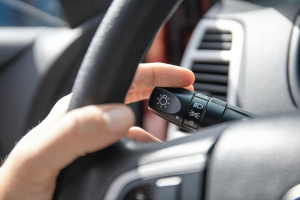
We’ve all been there, we’re driving down the road and someone cuts in front of you without signaling. We know that this is frustrating, especially because this can cause a potential accident, putting you and your passengers in harm’s way. In this situation, it is easy to get angry, but driving with road rage is just as dangerous and can cause a potential accident too. Instead of freaking out, take a look at this week’s blog to brush up on turn signal etiquette and be sure to share it so that all of your friends, family, and followers, brush up on it too. That way we can try and remind people of what your turn signal is for, why it is important, and when it is appropriate to do so! Don’t wait any longer, check out our tips below and get sharing so that everyone can stay informed!
King Volkswagen’s Guide To Signaling In Your Ride:
Changing lanes:
- You need to signal when changing lanes so the driver in the lane next to you knows your car coming over, also allowing them to decide if the need to slow down or speed up to let you over. Don’t signal while you are already changing lanes, signal and then give a few seconds for the drivers in the other lane and for you to safely change lanes.
Turning into a street:
- It is important to signal when turning because whether you’re taking a right or left-hand turn you have to basically come to a complete stop, and if you don’t signal the car behind you might not realize you’re slowing down and might hit you from behind.
At a stop sign:
- As with stop lights, if there are turn-only lanes, signal that you are getting into that lane and keep your turn signal on until the turn is completed. If you don’t signal other cars and pedestrians may incorrectly assume it is safe to go when it is not.
It cannot be overstated:
- Use your turn signal, and turn it on long before you make your intended maneuver. Flicking on your turn signal takes almost no effort, but it makes a massive difference in your safety and the safety of others.





